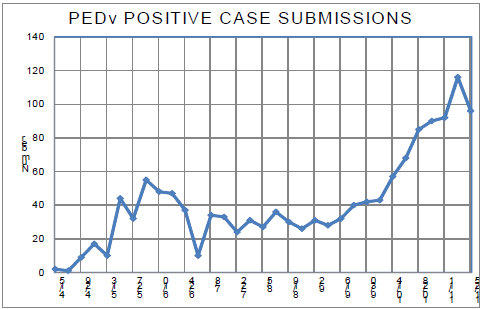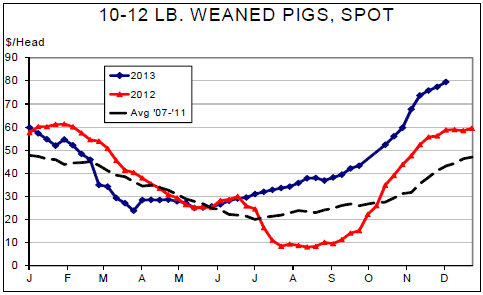



CME: Sharp Turnaround in Pork Supply Situation
US - The past few weeks have seen a sharp turnaround in the pork supply situation in both absolute numbers and relative to one year ago, write Steve Meyer and Len Steiner.From 1 August through the week that ended 5 November, pork production fell 3.1 per cent short of year-ago levels, primarily due to slaughter levels that were sharply lower than last year and well below the levels we expected given 1 September hog inventories from USDA. But the past five weeks have seen pork production rise sharply an exceed year-ago levels three times. The total for the 5-week period is now 0.8 per cent larger than last year, pushing the cutout value downward by about $4/cwt. and the average price of producer-sold barrows and gilts downward by roughly $8/cwt over that time period.

Slaughter numbers are still short of last year with 11.365 million head being harvested this year over the past five weeks, 1.7 per cent lower than last year’s total of 11.556 million head. But the big factor that has pushed production higher is the sharp rise in average slaughter weights. Producer-sold barrows and gilts are 2.8 per cent heavier than one year ago over the 5-week period. "Negotiated" barrows and gilts are three per cent heavier than last year while hogs, which includes sows and lighter weight "off" hogs are 2.5 per cent heavier.
But the really shocking increase in slaughter weights is for packer-owned pigs which have recently averaged 217 to 219 pounds CARCASS WEIGHT, roughly eight pounds or four per cent heavier than one year ago. Further, these weights are not for just a few hogs as the packerowned supply accounts for roughly 30 per cent of all barrows and gilts reported to USDA under mandatory price reporting.
The increase of packer-owned hog weights is, we believe, primarily due to Seaboard Foods’ effort to backfill for pigs they lost last summer to PEDv on its farms in the Oklahoma Panhandle region. Those pig losses are now showing up as lower plant numbers at Seaboard’s Guymon, Oklahoma, plant which, according to our sources, has not operated as usual on a Saturday since October. If numbers are short and the company still needs pounds for its customers, increasing pounds per head is about the only way to get it done.

The most recent data available from the FSIS and the National Animal Health Laboratory Network shows a slight drop in the number of new positive PEDv samples at diagnostic labs — but the drop should not be counted as a trend reversal. Those data are for the week of 24 November and we heard last week that the disease was still spreading rapidly in Iowa, was apparently picking up speed in Minnesota and had recorded its first victims in Nebraska.
The consensus at a major pork producer meeting was that the disease may not stop until it has infected the entire US herd. The question then will become how long the resulting immunity levels will prevent more losses. Industry observers now believe that roughly 1.5 million sows have been infected. Using some rule-of-thumb figures (again based on anecdotal evidence) of 2.7 pigs lost for every sow on the infected farms, this exposure would mean that losses now number about 4 million over seven months. The losses are being reflected in record-high weaned pigs prices as feeders with slack space chase short supplies. $80 per head looks a bit absurd but our cost model says that, given lower feed costs, the pigs will still make money.









